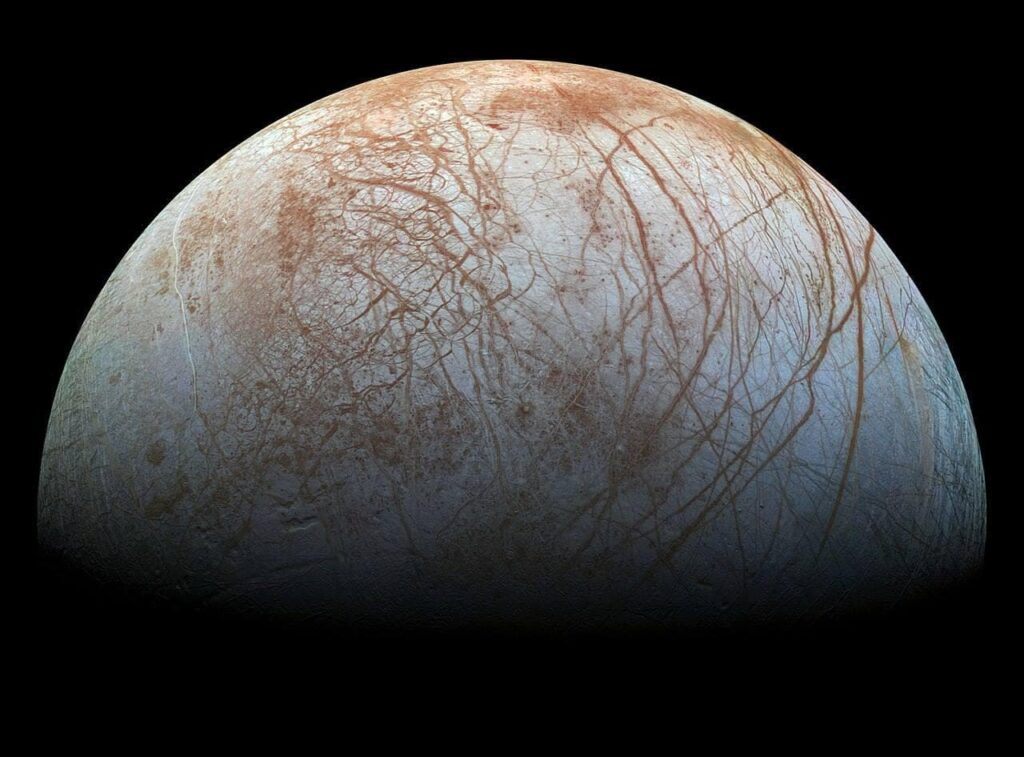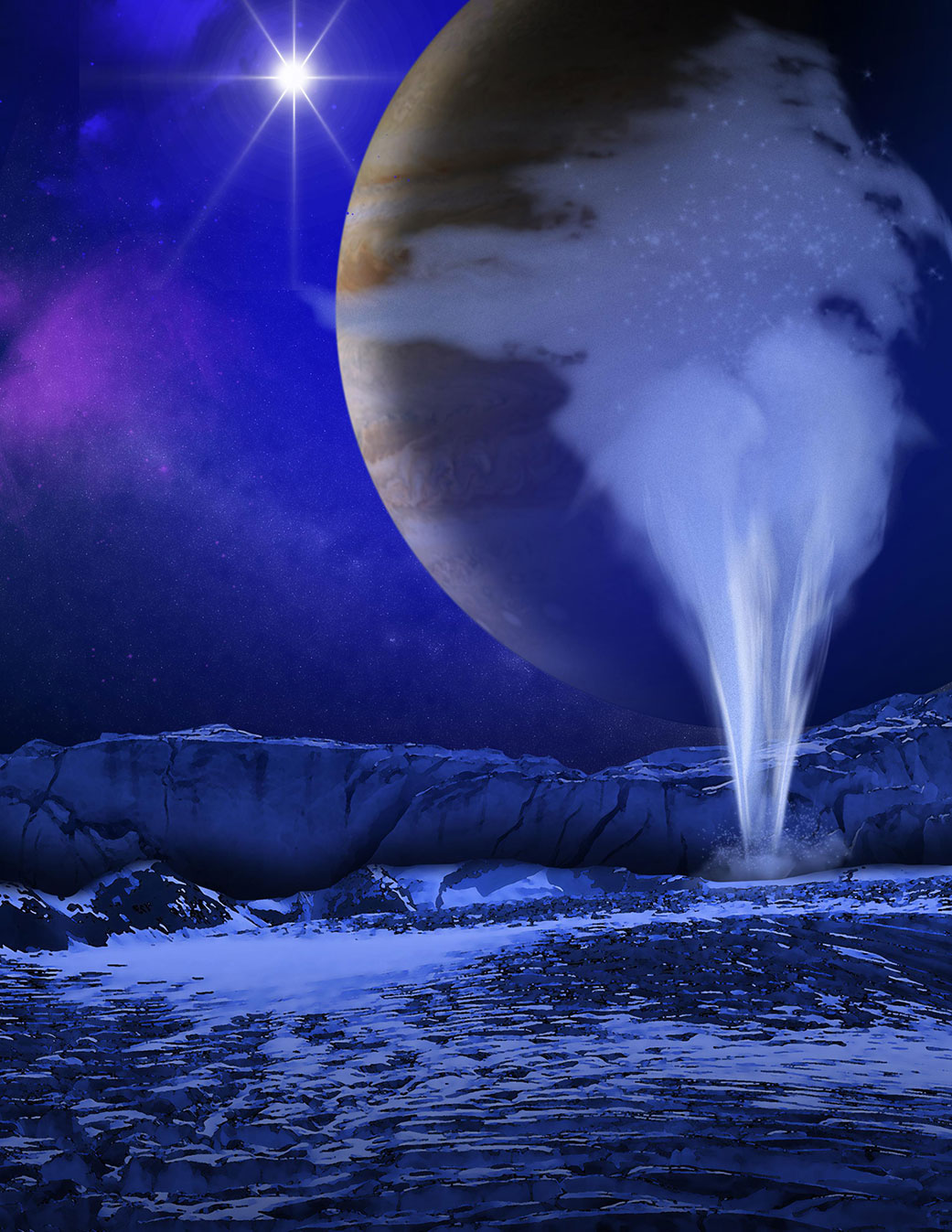The source of the water emissions recorded by telescopes on the surface of Europe may be shallow subsurface lakes. This is stated in an article recently published in the journal Planetary Science Journal.
Water emissions on Europa
Subsurface reservoirs on the icy moons of giant planets are now considered one of the most promising places to search for life in the Solar System. That is why in the coming years NASA and ESA plan to send Europa Clipper and JUICE missions to Jupiter, which will study such bodies. Especially great attention will be paid to Europa. It is believed that under its icy surface there is a global ocean, which contains more water than in all terrestrial oceans.

The mission’s interest in Europa is also fueled by data obtained by the Hubble Observatory and ground-based telescopes. They managed to find traces of water vapor several times, indicating the presence of water emissions from under the surface of Europa. This provides an interesting opportunity. An interplanetary spacecraft can fly through such an outburst and directly investigate the composition of water without the need to land special probes. Something similar has already been done by Cassini during visits to the Saturnian moon Enceladus.
Different ice at different depths
But what is the cause of these emissions? To answer this question, scientists from NASA’s Jet Propulsion Laboratory (JPL) resorted to computer modeling. It showed that the most likely source of emissions may be shallow subsurface lakes located at a depth of 4 to 8 km below the surface of Europa.

It’s all about the strength of the ice. At this depth, it is the coldest and most fragile. Because of this, when the water in the lakes begins to freeze, the ice cannot withstand its expansion. This leads to its destruction and the release of water to the surface, which can be compared to the explosion of a can of sparkling water forgotten in the freezer.
Lakes located at a depth of more than 8 km rest on warmer and softer ice. It will act as a cushion, absorbing excess pressure. As a result, instead of an explosion, the freezing pockets of water will gradually stretch, like a balloon filled with liquid.
According to the researchers, the instruments located on board Europa Clipper will allow it to obtain detailed images of the surface of Europa and detect emissions, which will test the theory of their origin. Also, the question of the potential connection of small lakes in the crust of Europe with the subsurface ocean located at a much greater depth remains open.
Earlier we talked about how the Juno probe photographed the night hemisphere of Europa.
According to https://www.nasa.gov
Follow us on Twitter to get the most interesting space news in time
https://twitter.com/ust_magazine

